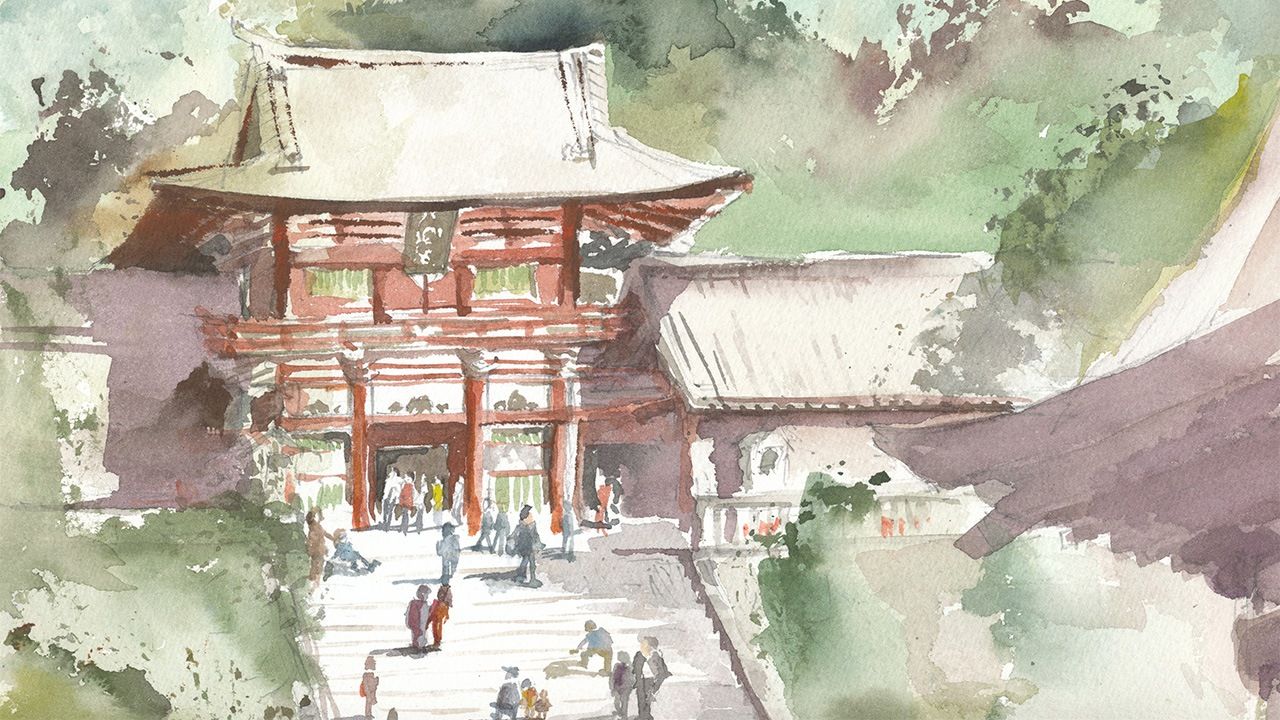
The Kamakura Shōguns
History- English
- 日本語
- 简体字
- 繁體字
- Français
- Español
- العربية
- Русский
This year’s NHK historical taiga drama serial Kamakura-dono no 13-nin (The 13 Lords of the Shōgun) takes place during the late years of the Heian period (794–1185) and the early years of the Kamakura period (1185–1333), when a new shogunate was established. The Kamakura shogunate lasted for over 140 years with power initially lying with the Minamoto clan. The Hōjō clan soon gained control, however, and most of the shōguns during this period were mere figureheads.
1. Minamoto no Yoritomo (r. 1192–99)
The first shōgun of the Kamakura shogunate inaugurated almost 700 years of warrior rule in Japan until the end of the Edo period (1603–1868).
Yoritomo was born in 1147 in Owari Province (now Aichi Prefecture) as the third son of Minamoto no Yoshitomo. He was exiled to Izu after his father was defeated in the 1160 Heiji Rebellion against Taira no Kiyomori. In 1180, Yoritomo raised an army and ultimately overcame the Taira clan in the famous Genpei War, which lasted for five years. He then fell out with his younger half-brother Minamoto no Yoshitsune, driving him into exile and forcing his suicide. Having effectively ruled the country since 1185, Yoritomo was granted the title of shōgun in 1192.
2. Minamoto no Yoriie (r. 1199–1203)
The eldest son of Yoritomo with his principal wife Hōjō Masako. Although he was nominally the country’s ruler, a council of 13 officials held effective power. In 1203, his father-in-law Hiki Yoshikazu and other members of the Hiki clan were killed by the Hōjō clan in a power struggle, and Yoriie was forced to abdicate in favor of his younger brother Minamoto no Sanetomo. He was exiled, and then assassinated the following year in Izu at the age of 21.
3. Minamoto no Sanetomo (r. 1203–19)
The second son of Yoritomo and Hōjō Masako, he became shōgun after his brother Yoriie was deposed. During his reign, political power was held by the regents Hōjō Tokimasa (his grandfather) and Yoshitoki (his uncle). In 1219, he was assassinated at the influential Kamakura shrine Tsurugaoka Hachimangū by his nephew Kugyō—Yoriie’s son. This brought an end to the Minamoto line of shōguns.
Sanetomo is also known for his poetry, and he studied waka from Fujiwara no Teika.
4. Kujō Yoritsune (r. 1226–44)
The son of imperial regent Kujō Michiie and great-grandson of Minamoto no Yoritomo’s sister. After the assassination of Minamoto no Sanetomo, there was no shōgun for several years until Yoritsune’s distant claims made him a suitable candidate, as a puppet of the Hōjō clan. However, the approach to Yoritsune and growing power of rivals to the Hōjō led to the clan replacing him with his son Kujō Yoritsugu.
5. Kujō Yoritsugu (r. 1244–52)
Son of Yoritsune. Made shōgun while still a child, but removed from power by the regent Hōjō Tokiyori, who was opposed to the increasing influence of the Kujō family.
6. Prince Munetaka (r. 1252–66)
The first son of Emperor Go-Saga, and the first imperial prince to become shōgun. He was given almost no power by the regent Hōjō Tokiyori and deposed when suspected of plotting.
7. Prince Koreyasu (r. 1266–89)
The son of Prince Munetaka, he became shōgun at the age of two. The failed Mongol invasions took place during his reign. After he was removed from the position, he was sent back to Kyoto.
8. Prince Hisaaki (r. 1289–1308)
The son of Emperor Go-Fukakusa, he became shōgun after his cousin Koreyasu was sent back to Kyoto. He had no political power, but was a central figure in the poetic world of the period. Removed from power by the Hōjō, who did not like for shōguns to have long reigns.
9. Prince Morikuni (r. 1308–33)
The son of Prince Hisaaki, he succeeded his father as shōgun. When the Kamakura shogunate was overthrown, he became a Buddhist priest.
(Originally published in Japanese. Banner image © Pixta.)